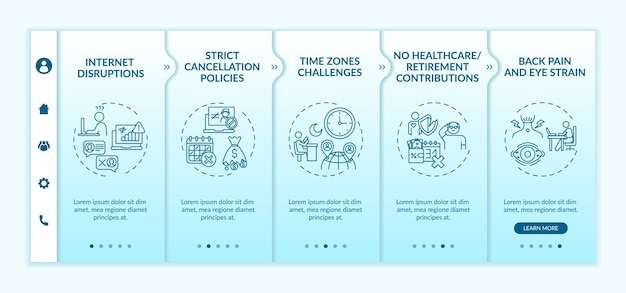Maximize Your HSA: A 2025 Guide to Healthcare Savings Accounts

New Healthcare Savings Accounts (HSAs) offer a powerful way to save for future medical expenses while enjoying tax benefits; understanding contribution limits and eligibility, especially for 2025, is crucial for maximizing these advantages.
Are you looking to secure your healthcare future while saving on taxes? The New Healthcare Savings Accounts (HSAs) can be a game-changer. Let’s explore how you can maximize your contributions for tax-free personal healthcare expenses in 2025.
Understanding Healthcare Savings Accounts (HSAs)
Healthcare Savings Accounts (HSAs) are tax-advantaged savings accounts that can be used for healthcare expenses. They’re a powerful tool for managing and saving for future medical costs, providing a triple tax benefit that will become even more appealing in 2025.
What is an HSA?
An HSA is a savings account specifically designed for individuals with high-deductible health insurance plans (HDHPs). It’s a tool that allows you to save money tax-free for qualified medical expenses.
Who is Eligible for an HSA?
To be eligible for an HSA, you must meet certain criteria, including having a high-deductible health plan, not being covered by other health insurance, and not being claimed as a dependent on someone else’s tax return.
- Must be enrolled in a High Deductible Health Plan (HDHP).
- Cannot be covered by other non-HDHP health insurance.
- Cannot be enrolled in Medicare.
- Cannot be claimed as a dependent on someone else’s tax return.

HSAs offer a significant advantage for those who qualify by providing tax benefits on contributions, growth, and withdrawals, making them a powerful asset for long-term healthcare savings.
2025 HSA Contribution Limits
Staying up-to-date with the annual HSA contribution limits is critical to maximize your savings and tax benefits. These limits are adjusted yearly by the IRS, and understanding them allows you to plan your contributions effectively for the New Healthcare Savings Accounts (HSAs) in 2025.
Individual Contribution Limits
For 2025, the individual HSA contribution limit is expected to increase. Projecting these limits helps you plan your savings strategy.
Family Contribution Limits
The family contribution limit is higher than the individual limit, allowing families to save even more for healthcare expenses. This is especially beneficial for families with higher medical costs.
Planning your HSA contributions strategically, considering both individual and family limits, can significantly impact your ability to cover healthcare costs in the future. Adjust your contributions as needed to take full advantage of these savings opportunities.
Tax Advantages of HSAs
One of the most compelling reasons to use a Health Savings Account is the tax benefits it offers. These benefits can significantly reduce your overall tax burden while helping you save for healthcare costs. The triple tax advantage makes New Healthcare Savings Accounts (HSAs) an appealing savings vehicle.
Tax-Deductible Contributions
Contributions to an HSA are tax-deductible, meaning you can deduct the amount you contribute from your taxable income, lowering your tax liability.
Tax-Free Growth
The money in your HSA grows tax-free, allowing your savings to compound over time without being subject to annual taxation.
- Contributions are tax-deductible.
- Earnings grow tax-free.
- Withdrawals for qualified medical expenses are tax-free.

The substantial tax advantages of HSAs make them a valuable tool for long-term financial planning, especially for those who want to save for healthcare expenses while minimizing their tax burden.
Qualified Medical Expenses
Understanding what qualifies as a medical expense is essential for using your HSA funds correctly. Using HSA funds for non-qualified expenses can result in taxes and penalties. Therefore, it is important to use the New Healthcare Savings Accounts (HSAs) money for qualifying expenses.
Common Qualified Expenses
Qualified medical expenses include doctor visits, hospital stays, prescription drugs, and medical equipment. Certain over-the-counter medications with a prescription can also be eligible.
Non-Qualified Expenses
Non-qualified expenses include cosmetic procedures, health insurance premiums (with some exceptions), and non-prescription over-the-counter medications. Using HSA funds for these expenses can lead to tax implications.
Knowing the difference between qualified and non-qualified expenses ensures you maximize the tax benefits of your HSA and avoid unnecessary penalties. Always consult IRS guidelines or a tax professional if you’re unsure about a specific expense.
How to Open and Manage an HSA
Opening and managing an HSA is a straightforward process. Choosing the right HSA provider and understanding the account features are key to maximizing the benefits of your account.
Choosing an HSA Provider
Select an HSA provider that offers low fees, a variety of investment options, and excellent customer service. Compare different providers to find the best fit for your needs.
Managing Your HSA
Regularly monitor your HSA balance, review your contributions, and keep track of your qualified medical expenses. Use online tools and resources to manage your account effectively.
By carefully selecting an HSA provider and actively managing your account, you can optimize your savings and ensure your HSA meets your healthcare needs.
Strategies for Maximizing Your HSA in 2025
To truly leverage the power of New Healthcare Savings Accounts (HSAs), consider these strategies to get the most out of your account. Smart planning can lead to significant savings and financial security.
Contribute the Maximum Amount
Maximize your contributions each year to take full advantage of the tax benefits and grow your savings as quickly as possible. Adjust your contributions as necessary to reach the annual limit.
Invest Your HSA Funds
Consider investing your HSA funds in stocks, bonds, or mutual funds to grow your savings over time. Choose investments that align with your risk tolerance and long-term financial goals.
- Contribute up to the annual limit.
- Invest your HSA funds for growth.
- Pay for current medical expenses out-of-pocket and save receipts for potential future reimbursement.
By maximizing contributions, investing wisely, and strategically managing your expenses, you can unlock the full potential of your HSA and secure your financial future.
| Key Point | Brief Description |
|---|---|
| 💰 Contribution Limits | Maximize your contributions to fully leverage tax benefits. |
| ✅ Eligibility | Ensure you meet the requirements, like having a HDHP. |
| 📈 Tax Advantages | Enjoy tax-deductible contributions, tax-free growth, and tax-free withdrawals. |
| ⚕️ Qualified Expenses | Use HSA funds for eligible medical costs like doctor visits. |
Frequently Asked Questions (FAQs)
▼
A High Deductible Health Plan (HDHP) is a health insurance plan with a higher deductible than a traditional insurance plan. It’s a requirement for opening and contributing to an HSA.
▼
Yes, you can use your HSA funds for qualified medical expenses for yourself, your spouse, and your dependents, even if they are not covered by your HDHP.
▼
Your HSA is yours to keep, even if you change jobs or health insurance plans. You can continue to use the funds for qualified medical expenses.
▼
Yes, using HSA funds for non-qualified expenses before age 65 is subject to income tax and a 20% penalty. After age 65, it’s subject to income tax only.
▼
Generally, you cannot contribute to both an HSA and a general-purpose FSA in the same year. However, a limited-purpose FSA that covers only dental and vision expenses is allowed.
Conclusion
Navigating the landscape of New Healthcare Savings Accounts (HSAs) requires understanding the contribution limits, eligibility criteria, and tax advantages. By proactively planning and strategically managing your HSA, you can secure a financially sound future while effectively managing your healthcare expenses in 2025 and beyond.





